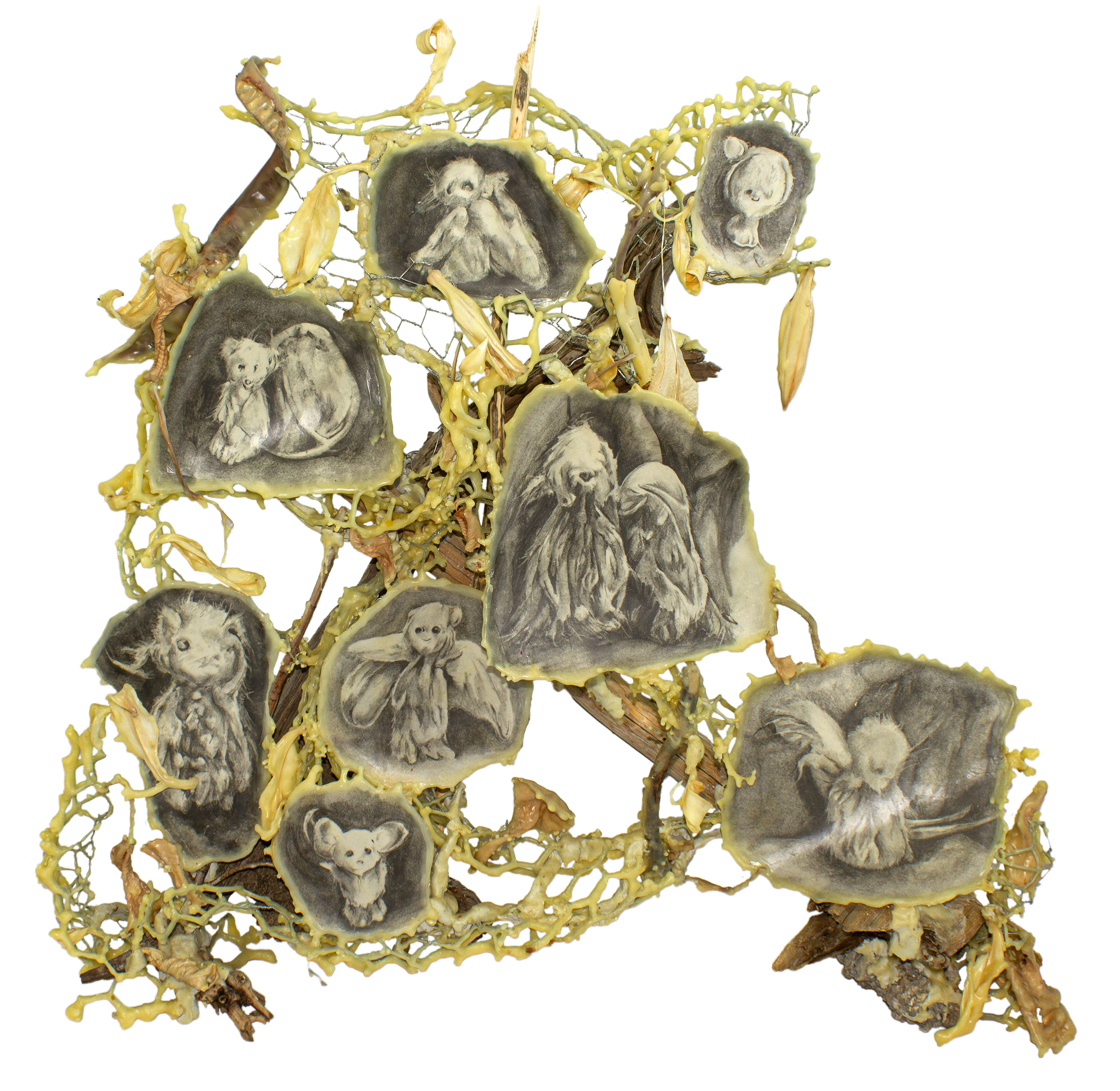
Daniel Stroh

Our stuffies
Subterranean fungus takes the dead weight of the forest into itself, breaking molecular bonds down to simple compounds to feed itself while gifting its surplus. It is neither beginning nor end, but the absence of both. Facilitator of chemical disassembly and reorganization.
Beefsteak fungus has a collaborative relationship with ancient oak trees. It feeds only on the dead heartwood, the oldest wood at the oak’s core, draining the trapped nutrients back into the exhausted soil. Within, the hollowed out interior cavity becomes a home for vulnerable creatures of the forest — whether they be animals or elves. Through this process of active, symbiotic decomposition, not only is the tree’s life extended, it becomes shelter and a site of folkloric mystery.
I use Artbreeder, an artificial intelligence image generator, to extract imagery that resembles plushies. The neural network learns from vast online image archives, acting as a digital decomposer of visual material. But where the organic decomposer is bound by the rules of chemistry, the AI decomposer practices alchemy. Its science coincides with fantasy and myth. Its processes are fluid, not rigid.
Much like a child developing lore to dictate the world of their stuffed animals, I build environments for these collaboratively produced characters to play. The sculptural form of their environment extends the rhizomatic structure from which they were birthed, suspended in a fluid state between new growth and decomposition. Interdependent and simultaneous, these seemingly binary actions are written into each other. This dense web of interlocking, morphing, changing cycles (both organic and digital) is so complex and vast that I can only guide my understanding by treating it mythologically. The comparison to fungal decomposition is an allegory, a tool of understanding that preserves space for enchantment and mystery.
Our Stuffies is a playdate between Artbreeder and me. By treating the neural network as a collaborator, I imagine a hopeful myth for the future in which AI plays the essential role of the decomposer in online cultural ecosystems —breaking down visual materials to make their contents available for the creation of a new, emergent fantasy.
The work shown is a digitized excerpt from a series of sculptures, recontextualized as a map.
Daniel Stroh is a Denver based multidisciplinary artist working primarily in sculpture, drawing, and tattoo. Their work combines real and imagined organic materials with drawings informed by fantasy and dream imagery to build networks that dance between states of growth and decay. Most recently, their work addresses the possibility of applying ancient symbiotic decomposition to digital space to alleviate the stagnation caused by the hyper-commodification of the internet. Daniel received a BFA from Metropolitan State University of Denver and has shown their work in numerous physical and online exhibitions, including Final Hot Desert’s Shedding the Third Skin.
Website